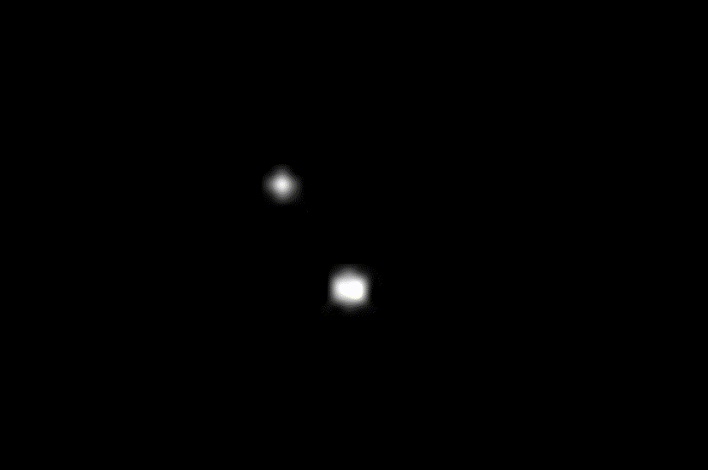NASA's Shocking Discovery Of A Ringed Asteroid 2B Miles Away Was Remarkable Luck

Chariklo, also known as Centaur 1997 CU26, was observed in 1997 by SSERVI Director Yvonne Pendleton and her husband Dale Cruikshank. Astronomers later observed the asteroid passing in front of a distant star and discovered it had two narrow, dense rings. It was the fifth-ringed world known to exist in the solar system, after Saturn, Jupiter, Uranus, and Neptune.
Pablo Santos-Sanz, from Instituto de Astrofiscia de Andalucia in Granada, Spain, said it was "remarkable luck" that the team discovered that Chariklo was on course for an occultation event in October of last year. On October 18, 2022, Webb's Near-Infrared Camera (NIRCam) closely monitored the star Gaia, and watched for "tell-tale dips" in brightness which would signify an occultation had taken place. The footage captured by JWST "clearly detected" the rings of Chariklo, giving the team evidence that the new occultation technique was effective.
Santos-Sanz explained, "As we delve deeper into the data, we will explore whether we cleanly resolve the two rings. From the shapes of rings' occultation light curves, we also will explore the rings' thickness, the sizes and colors of the ring particles, and more." He added that the team hopes to gain insight into why Chariklo has rings, and possibly detect new fainter rings.

Noemi Pinilla-Alonso remarked, "Spectra from ground-based telescopes had hinted at this ice, but exquisite quality of the Webb spectrum revealed the clear signatures of crystalline ice for the first time."
Principal investigator Dean Hines added, "Because high-energy particles transform ice from crystalline into amorphous states, detection of crystalline ice indicates that the Chariklo system experiences continuous micro-collisions that either expose pristine material or trigger crystallization processes."

Pinilla-Alonso remarked, "By observing Chariklo with Webb over several years as the viewing angle changes, we may be able to isolate the contribution from the rings themselves." The new technique could also open up opportunities to characterize other small objects in the distant solar system in the near future.
Top image credit: NASA


